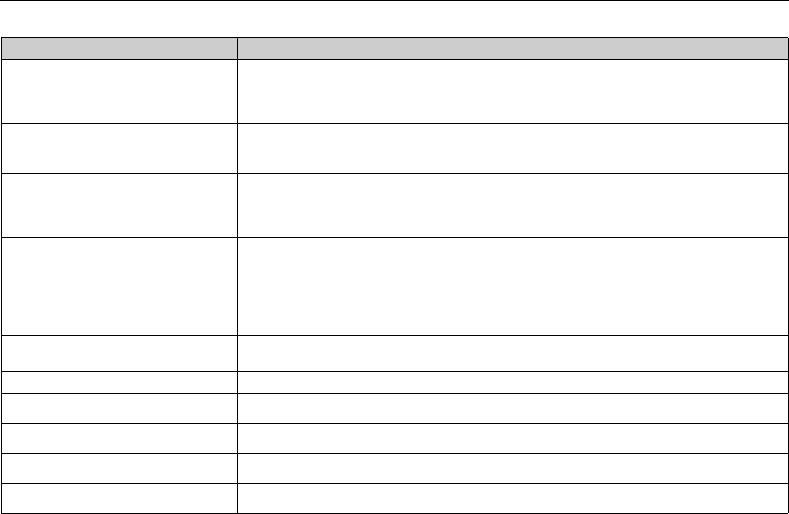Operating Manual Owner manual
Table Of Contents
- Operating overview
- 1 Brief description
- 2 Identifying the device version
- 3 Mounting
- 4 Electrical connection
- 5 Startup of the device
- 5.1 Display and control elements
- 5.2 Setting the display after device is switched on
- 5.3 Selecting and editing parameters (plausibility requirement for input values)
- 5.4 Canceling edit
- 5.5 Acknowledging alarms using the reset key (for temperature limiter STB only)
- 5.6 Acknowledgement of alarms using the binary input (for temperature limiter STB only)
- 5.7 Functional test
- 5.8 Seal device
- 6 Safety Manual
- 6.1 Brief description
- 6.2 Safety temperature monitor (STW)
- 6.3 Safety temperature limiter (STB)
- 6.6 Connection possibilities of the sensors (SIL)
- 6.7 Standards and definitions
- 6.8 Safety-related parameters related to the temperature monitoring unit
- 6.9 Determining the Safety Integrity Level (SIL)
- 6.10 Determining the achieved Performance Level (PL)
- 6.12 Performance Level
- 6.13 Relationship between the Performance Level (PL) and the Safety Integrity Level (SIL)
- 6.14 Other applicable device documentation
- 6.15 Behavior during operation and in the event of a fault
- 6.16 Regular tests
- 6.17 Intrinsic safety according to DIN EN 60079-11
- 6.18 Monitoring of potential ignition sources according to DIN EN 50495 and DIN EN 13463- 6
- 6.19 Certificates
- 7 ATEX
- 7.1 Intended use
- 7.2 Identification markings according to ATEX directive 94/9/EC:
- 7.3 Meaning of the letter X in the type test certificate
- 7.4 Associated intrinsically safe electrical apparatus according to EN 60079-11
- 7.5 Safety device according to EN 50495
- 7.5.1 Temperature monitoring unit based on ignition protection "e" – increased safety according to EN 60079-7
- 7.5.1.1 Function of increased safety
- 7.5.1.2 Application in the 1-sensor variant
- 7.5.1.3 Application in the 2-sensor variant
- 7.5.1.4 Application of temperature transmitters
- 7.5.2 Minimum overpressure monitoring for static pressurized enclosure on the basis of ignition protection "p", pressurized enclosure according to EN 60079-2
- 7.5.2.1 Function of the static pressurized enclosure
- 7.5.2.2 Safety device for static pressurized enclosure
- 7.5.2.3 Application as safety device for static pressurized enclosure
- 7.6 Monitoring of potential ignition sources "b" according to EN 13463-6
- 8 Configuration level
- 9 Technical data
- 9.1 Analog inputs
- 9.2 Analog output
- 9.3 Binary input
- 9.4 Relay outputs
- 9.5 Measuring circuit monitoring
- 9.6 Voltage supply
- 9.7 Test voltages according to EN 60730, Part 1
- 9.8 Electrical safety
- 9.9 Environmental influences
- 9.10 Case
- 9.11 Approvals/approval marks
- 9.12 Important information for the probes in Chapter 9.13 to Chapter 9.15
- 9.13 Probes for the operating medium air
- 9.14 Probes for water and oil
- 9.15 Probes for air, water, and oil
- 10 Setup program
- 11 Alarm messages
- 12 Error messages
- 13 What to do, if ...
- 14 Information for devices with extra code 062 GL
- 15 Behavior of outputs

6 Safety Manual
2013-04-01
38
Safety function A function that is performed by an E/E/PE safety-related system, safety-related system
based on other technology, or external equipment for reducing risk with the goal of
achieving or maintaining a safe state for the EUC taking into consideration a specified
dangerous event
Safety integrity The probability that a safety-related system will perform the required safety function
under all specified conditions within a specified period of time according to
requirements.
Safety Integrity Level (SIL) One of four discrete levels for specifying the requirement for safety integrity of the
safety functions assigned to the E/E/PE safety-related system. Safety Integrity Level 4
represents the highest level of safety integrity, while Safety Integrity Level 1 represents
the lowest.
Safety-related system A system that
- performs necessary safety functions that are required to reach or maintain a safe state
for the EUC and
- is designed by itself or with other E/E/PE safety-related systems, safety-related
systems based on other technology, or external equipment for risk reduction to achieve
the necessary safety integrity for the required safety functions.
Safety Instrumented System (SIS) Safety instrumented system to perform one or more safety-related functions. An SIS
consists of sensor(s), logic system, and actuator(s).
Lambda:
λ Failure rate per hour
Lambda dangerous:
λ
D
Rate of dangerous failures per hour
Lambda
Δangerous Δetect: λ
DD
Rate of detected dangerous failures per hour
Lambda
Δangerous Υndetect: λ
DU
Rate of undetected dangerous failures per hour
Lambda:
λ
S
Rate of safe failures per hour
Table 3: Terms and abbreviations according to DIN EN 61508 and DIN EN 61511
Name Description










